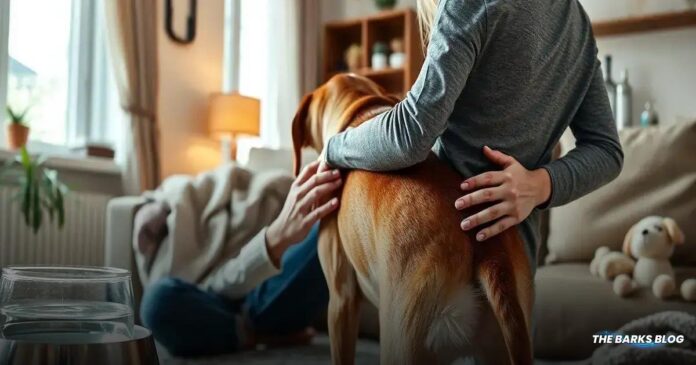Anal gland infections in dogs can occur due to poor gland emptying, impacted glands, allergies, or breed predispositions. Symptoms include scooting, excessive licking, foul odor, and discomfort. Diagnosis involves a veterinary examination, while treatment may include gland expression, antibiotics, and dietary changes. Preventive measures like a balanced diet and regular exercise are essential for reducing infection risks.
Taking proper care of our canine companions is a top priority. Yet sometimes, our pups can face health issues that are not only uncomfortable but also potentially dangerous.
One such issue is an anal gland infection, a common problem that is often overlooked. As responsible pet owners, we must ensure our dogs are not only happy but also healthy, and that includes maintaining the wellness of their anal glands.
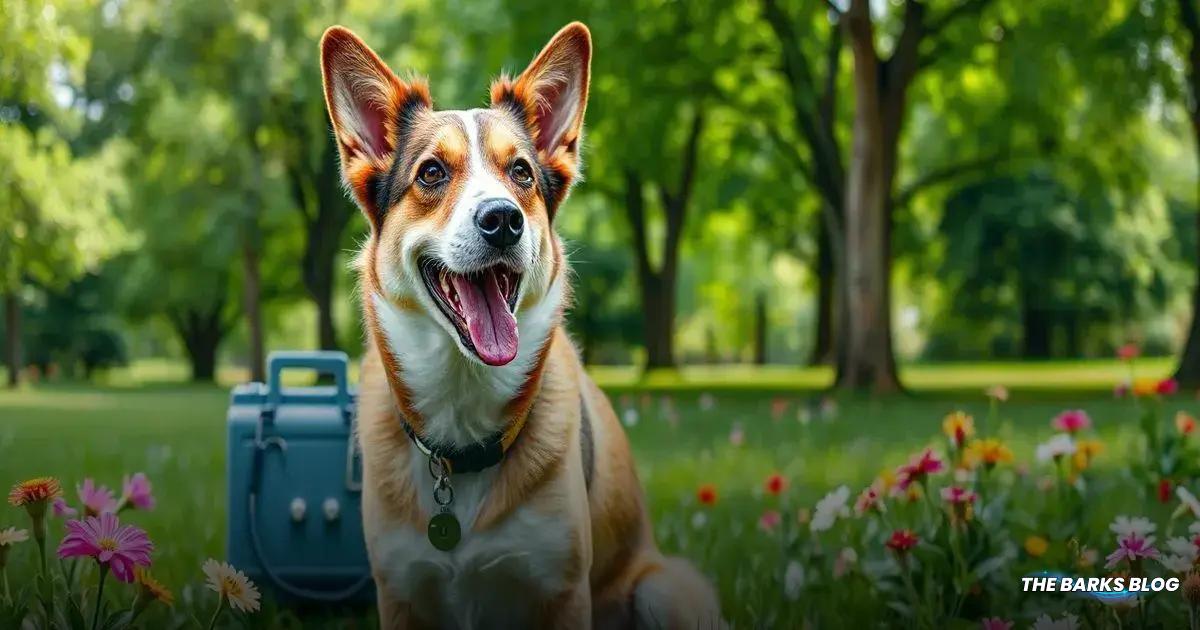
What are Anal Glands?
What are Anal Glands?
Anal glands, also known as anal sacs, are small sac-like structures located on either side of a dog’s rectum, near the anus. They usually range in size from about a pea to a grape, depending on the dog’s size.
These glands contain a fluid that has a distinctive scent unique to each dog. This fluid is released from each gland through a small duct that empties just inside the anus.
By releasing the scent from their anal glands, dogs can leave behind a signature smell that is used to mark their territory and communicate with other dogs. This is also why dogs often sniff each other’s anal areas as part of their social interactions.
Normally, anal gland fluid is expressed each time the dog has a bowel movement. The fecal material pressing against the walls of the rectum naturally expresses the fluid as it passes, keeping the glands healthy and preventing fluid buildup. However, sometimes the glands do not empty properly, leading to potential issues such as impaction or infection.
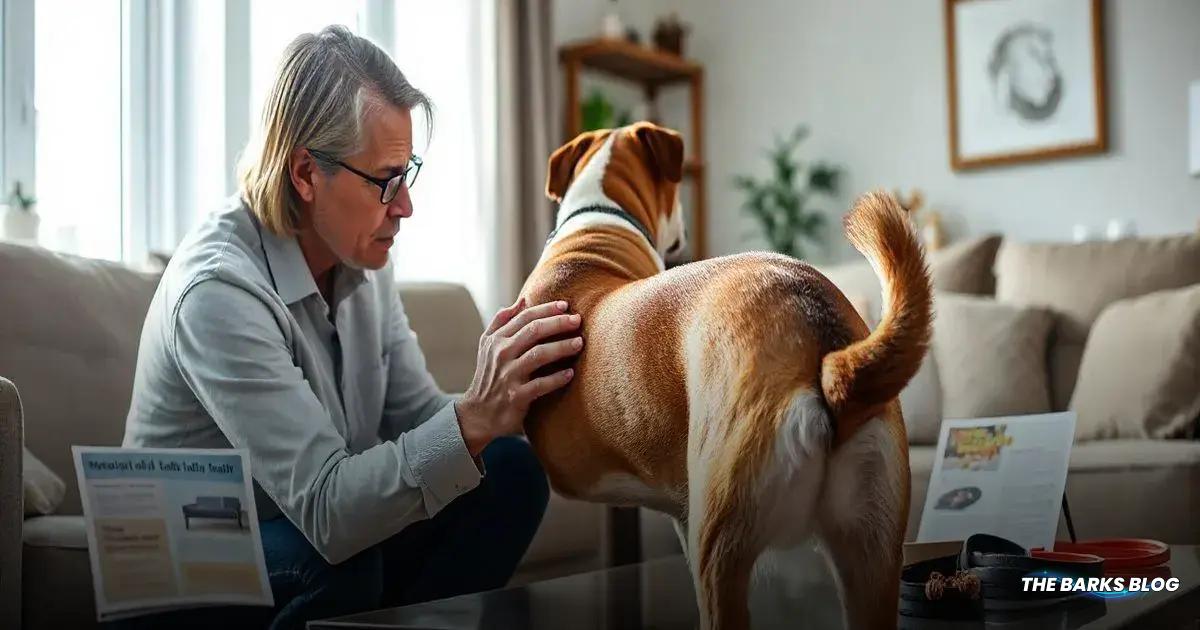
Signs of Anal Gland Infections
Signs of Anal Gland Infections
Detecting an anal gland infection involves observing your dog’s behavior and paying attention to certain signs. Here’s what you should look for:
- Scooting: If you notice your dog dragging its bottom along the ground, it could indicate discomfort or itching around the anal area.
- Excessive Licking: Dogs may excessively lick or bite their anal region due to irritation caused by an infection.
- Foul Odor: A strong, unpleasant odor around your dog’s rear end could be a sign of an anal gland issue.
- Discomfort or Pain: Your dog might display signs of discomfort, like whining or yelping when sitting or showing sensitivity when their hind area is touched.
- Swelling or Redness: Look for any visible swelling, redness, or inflammation around the anal area.
- Changes in Bowel Movements: Difficulty defecating, diarrhea, or straining during bowel movements can be linked to anal gland problems.
- Lethargy or Changes in Behavior: An infected anal gland might make your dog feel unwell, leading to changes in their overall behavior and energy levels.
If you notice one or more of these signs, consult your veterinarian. Left untreated, anal gland infections in dogs can worsen and lead to more serious issues.
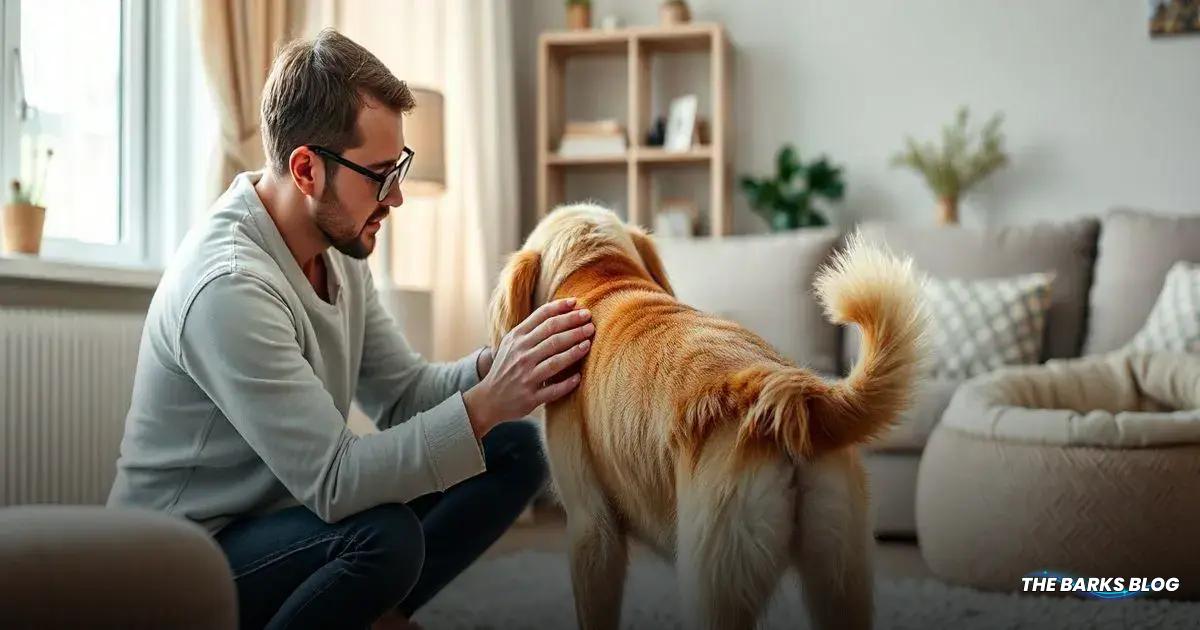
Causes of Anal Gland Infections
Causes of Anal Gland Infections
Anal gland infections can arise from a variety of factors, primarily involving a disruption in the natural balance and health of the anal glands. Here are some common causes:
- Poor Gland Emptying: Dogs that have difficulty emptying their anal glands naturally during bowel movements are at an increased risk of infections because the fluid accumulating in the glands creates an ideal environment for bacterial growth.
- Impacted Anal Glands: The swelling and inflammation caused by impaction can damage the gland tissue, making it more susceptible to bacterial infection. The stagnant fluid is also conducive to bacterial growth.
- Allergies and Skin Disease: Dogs with chronic inflammatory conditions that affect the anal area, such as allergies or dermatitis, can be more susceptible to anal gland infections. Inflammation can compromise the integrity of the glandular tissues, making them more vulnerable to infection.
- Breed Predisposition: Certain dog breeds are more prone to anal gland issues. Breeds with smaller body sizes or specific anatomical features might have a higher risk of impactions and infections. Breeds such as the Bichon Frisé, Cavalier King Charles Spaniel, Cockapoo, Cocker Spaniel, and Shih Tzu are known to be more at risk.
- Diet: Adequate fiber intake helps maintain consistent stool firmness, which is necessary for the natural expression of anal gland fluid during bowel movements. A diet lacking sufficient fiber can contribute to irregular bowel movements and poor gland emptying.
- Obesity: Overweight or obese dogs might have difficulty naturally emptying their anal glands due to reduced muscle tone and increased pressure on the anal area.
- Trauma or Injury: Any trauma or injury to the anal area can disrupt the integrity of the glandular tissues, making them more susceptible to bacterial invasion and infection.
- Stress and Anxiety: Emotional stress can lead to loose stools and contribute to the development of anal gland issues.
- Poor Hygiene: Inadequate hygiene practices or improper cleaning of the anal area can contribute to the buildup of bacteria and increase the risk of infection.
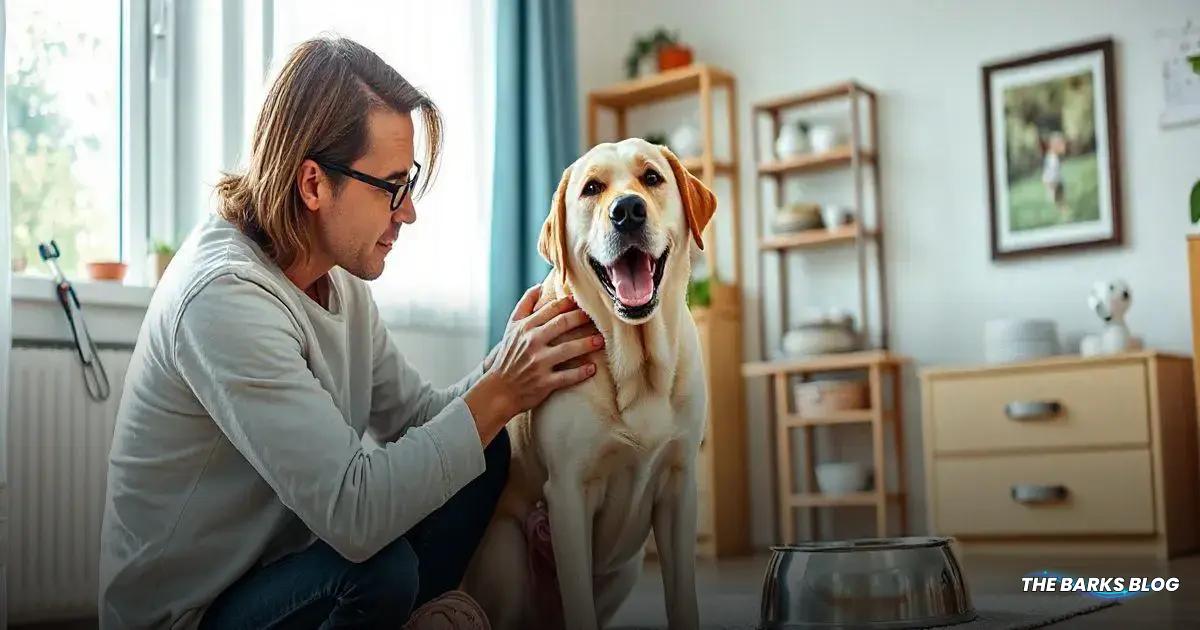
Risk Factors for Anal Gland Problems
Risk Factors for Anal Gland Problems
A dog anal gland infection can arise from a variety of factors, primarily involving a disruption in the natural balance and health of the anal glands. Here are some common risk factors associated with anal gland problems:
- Poor Gland Emptying: Dogs that have difficulty naturally emptying their anal glands during bowel movements are at a higher risk for infections due to fluid accumulation, which creates a breeding ground for bacteria.
- Impacted Anal Glands: Swelling and inflammation from impaction can damage gland tissue, making it more susceptible to bacterial infections.
- Allergies and Skin Conditions: Dogs with chronic inflammatory conditions affecting the anal area, such as allergies or dermatitis, can be more prone to infections as inflammation compromises gland health.
- Breed Predisposition: Certain breeds, particularly smaller ones or those with specific anatomical features, are more likely to experience anal gland issues. Breeds like the Bichon Frisé, Cavalier King Charles Spaniel, Cockapoo, Cocker Spaniel, and Shih Tzu are known to be at higher risk.
- Diet: A lack of adequate fiber in a dog’s diet can lead to irregular bowel movements and poor gland emptying, increasing the risk of infections.
- Obesity: Overweight dogs may struggle to empty their anal glands effectively due to reduced muscle tone and increased pressure in the anal region.
- Trauma or Injury: Any injury to the anal area can disrupt the integrity of the glands, making them more vulnerable to infections.
- Stress and Anxiety: Emotional stress can lead to loose stools, contributing to anal gland problems.
- Poor Hygiene: Inadequate cleaning of the anal area can lead to bacterial buildup and increase the likelihood of infections.
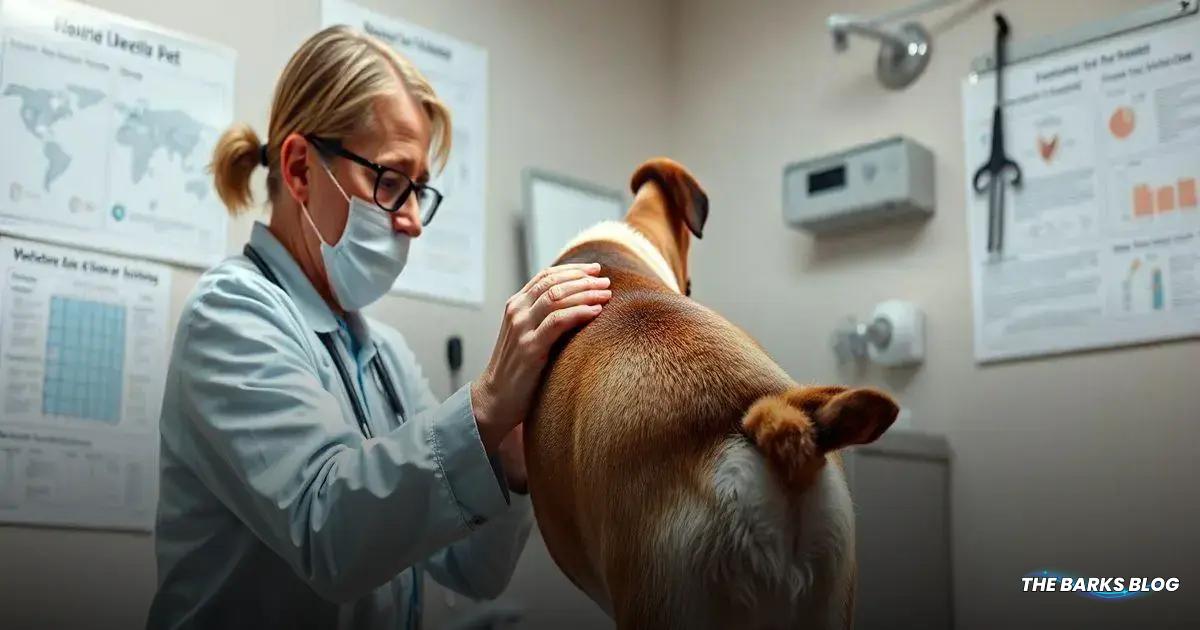
Diagnosis of Anal Gland Infections
Diagnosis of Anal Gland Infections
A veterinary examination is crucial for distinguishing between anal gland impaction, infection, or other potential ailments. This allows for the development of the correct treatment strategy. Here’s how the diagnosis typically proceeds:
The veterinarian will first assess the dog’s overall health and conduct a physical examination of the anal area to check for signs of inflammation, swelling, or discharge.
Next, a rectal palpation will be performed. Using a gloved finger, the veterinarian will gently feel the anal glands to check for blockages, pain, or abnormal texture. If an impaction is suspected rather than an infection, the veterinarian will also check if it’s possible to express the glands at this time.
In cases where an infection is suspected, additional tests may be recommended. A sample of fluid from the anal gland may be taken and sent for analysis to determine the type of bacteria present and the appropriate antibiotic needed.
Ultrasound may also be suggested to assess the health of the glandular tissues and to check for any abscesses. If there is suspected tumor involvement, a tissue biopsy may be performed.
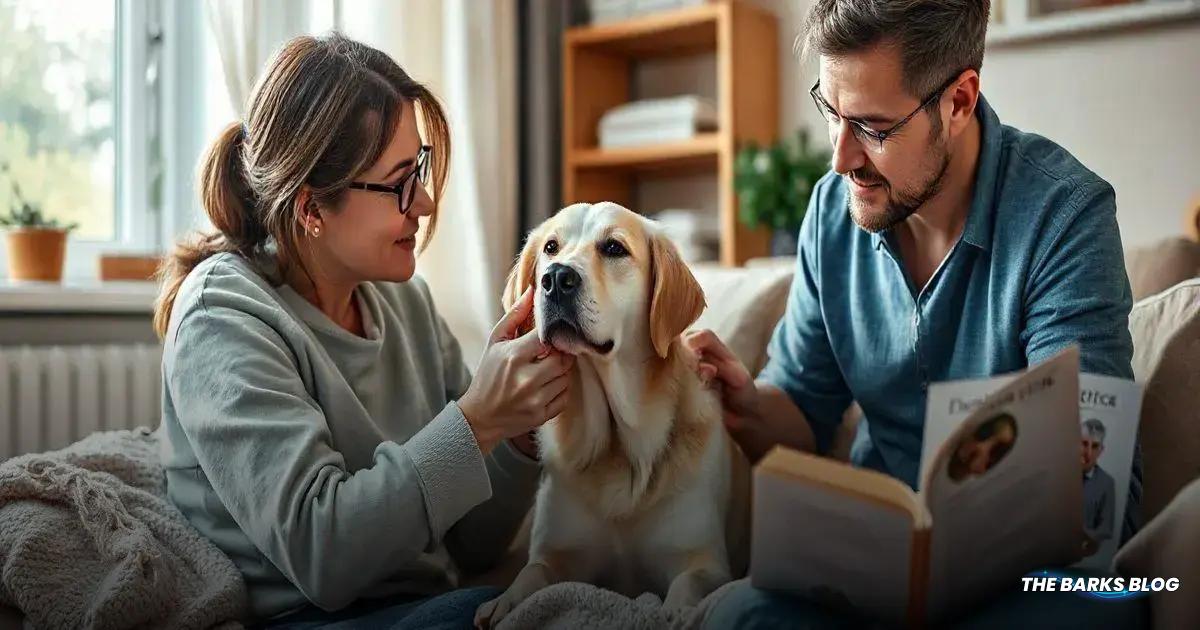
Treatment Options for Anal Gland Infections
Treatment Options for Anal Gland Infections
Treatment for anal gland infections in dogs varies based on the severity of the condition, but generally involves several key approaches:
- Expression of the Glands: The first step often involves expressing the anal glands to remove fluid buildup. This helps relieve pressure and can alleviate discomfort.
- Antibiotics: If a bacterial infection is diagnosed, antibiotics will be prescribed to treat the infection effectively. It’s important to complete the full course of antibiotics as directed by the veterinarian.
- Anti-inflammatory Medications: To reduce swelling and pain in the anal area, anti-inflammatory medications may be administered. These can help improve your dog’s comfort during the healing process.
- Surgery: In advanced cases, surgery may be necessary to drain abscesses, remove infected tissue, or correct structural issues that contribute to the problem. In severe cases or if the dog has recurrent infections, the glands may be removed altogether.
- Dietary and Lifestyle Changes: Depending on the underlying cause of the anal gland infection, your veterinarian may recommend changes to your dog’s diet, such as increasing fiber intake to promote regular bowel movements. Weight management and regular exercise may also be advised to help prevent future issues.
- Follow-Up Care: Regular follow-up visits may be necessary to monitor your dog’s recovery and ensure that the infection has resolved. Your veterinarian will provide guidance on any ongoing care needed to prevent recurrence.
By addressing the infection promptly and following your veterinarian’s recommendations, you can help ensure your dog’s comfort and health moving forward.

Preventing Anal Gland Infections
Preventing Anal Gland Infections
The best approach to managing anal gland infections in dogs is through prevention. By taking proactive measures, you can help avoid the discomfort and pain your dog may experience from an infection. Here are several key strategies to prevent anal gland problems:
- Diet and Hydration: Feed your dog a balanced diet that includes fiber-rich foods to promote regular bowel movements. Ensure your dog has constant access to clean and fresh water to stay well-hydrated.
- Exercise and Weight Management: Regular exercise helps maintain a healthy weight, reducing excess pressure on the anal glands and promoting natural gland emptying.
- Hygiene and Cleaning: Keep the hair around your dog’s rear end trimmed short to improve air circulation and prevent fecal material from sticking. Regularly clean the anal area with a damp cloth or specialized pet wipes between baths.
- Regular Veterinary Visits: Schedule routine checkups with your veterinarian to ensure early detection and prevention of anal gland problems.
- Professional Anal Gland Expression: Dogs that have chronic anal gland issues can benefit from regular expression by trained professionals who can safely perform this procedure.
- Dietary Supplements: Consider fiber supplements to help maintain healthy stool consistency, along with prebiotics and probiotics to support gut health and bowel function.
- Observation and Prompt Action: Be vigilant for signs of discomfort, such as scooting or excessive licking around the anal area. If you notice any of these signs, consult your veterinarian promptly for guidance.
By addressing the underlying factors that contribute to anal gland problems, you can significantly reduce the likelihood of infections occurring in the first place. This proactive approach ensures your dog’s comfort, health, and happiness in the long term.
Conclusion
Anal gland infections can cause significant discomfort and pain for your dog.
Understanding the role of anal glands in your dog’s health and learning how to prevent potential issues is an important aspect of responsible pet ownership.
By recognizing the signs of problems and seeking prompt veterinary care, you can effectively manage and treat anal gland infections.
Implementing proactive measures such as a balanced diet, regular exercise, proper hygiene, and timely veterinary attention can greatly reduce the likelihood of repeated anal gland problems.
By being proactive, you can help ensure your dog’s comfort and health now and in the years to come.
Your furry friend will thank you for taking the time to learn about their anal glands and what it takes to keep them healthy.
FAQ – Frequently Asked Questions about Anal Gland Infections in Dogs
How do you know if your dog needs its anal glands expressed?
Most often, dogs with anal gland problems are seen scooting their bums across the ground or excessively licking at the area. If your dog regularly needs their glands expressed, this is a key sign. However, it can also indicate a more serious issue, and a veterinary exam may be necessary.
How often do dogs’ anal glands need to be expressed?
This varies depending on the individual dog and their specific needs. Generally, most dogs naturally express their anal glands when they have bowel movements. Dogs that require manual expression may need it every few months, while others might need it every 4-6 weeks.
Can dogs express their glands by licking?
Dogs can sometimes express their anal glands by licking the anal area. The pressure and motion from licking can help release the fluid. However, this is not always sufficient, and some dogs may not be able to effectively empty their glands through licking alone.
Is it painful to express a dog’s glands?
Anal gland expression is typically not painful when done correctly by a trained professional. The process involves applying gentle external pressure to release the accumulated fluid. However, if the anal glands are already inflamed or infected, it may cause discomfort.
Should groomers express glands?
Groomers can express a dog’s anal glands if they are trained and experienced, and if the glands are not inflamed, infected, or abscessed. Groomers must know their limits and refer to a veterinarian if needed.
What are the long-term effects of anal gland infections?
If left untreated, anal gland infections can lead to chronic issues, abscesses, or even rupture. Regular veterinary care and preventive measures are essential to avoid complications and ensure your dog’s overall health.


